Welcome! As you navigate the dynamic world of financial markets, understanding the collective mindset of participants becomes crucial. While price charts tell us *what* happened, indicators that gauge market sentiment can offer clues about *why* and, potentially, *what might come next*. Among the most insightful of these tools, particularly within the options market, is the Put-Call Ratio (PCR). Think of it as a numerical snapshot of the prevailing fear and greed in the market at any given moment.
But what exactly is the Put-Call Ratio, how is it calculated, and most importantly, how can *you* use it to inform your trading and investment decisions? This article will demystify this powerful indicator, guiding you through its components, interpretation, practical applications, and potential limitations. We’ll explore how it acts as a barometer for market sentiment and why many seasoned traders view extreme PCR levels as potential signals for market reversals. Ready to add another valuable tool to your analytical arsenal?
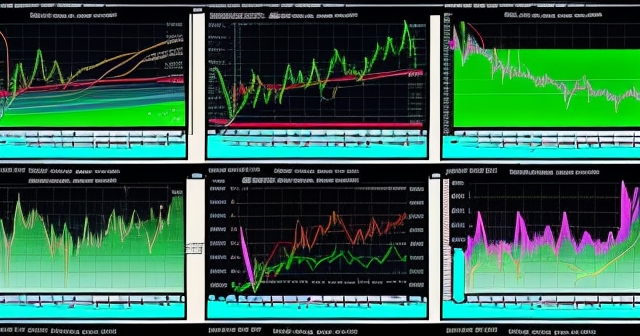
To truly understand the Put-Call Ratio, we first need to grasp the nature of the instruments it measures: put options and call options. These are fundamental types of derivative contracts, meaning their value is derived from an underlying asset, such as a stock, index, or commodity.
A call option grants the holder the *right*, but not the obligation, to *buy* an underlying asset at a specific price (known as the strike price) on or before a certain date (the expiration date). Why would someone buy a call? Primarily, it’s a bet that the price of the underlying asset will rise significantly above the strike price before expiration. If the price goes up, the call option becomes more valuable, offering leverage compared to buying the asset outright. Thus, heavy buying of call options is generally considered a bullish signal.
Conversely, a put option grants the holder the *right*, but not the obligation, to *sell* an underlying asset at a specific strike price on or before the expiration date. Traders buy put options if they anticipate the price of the underlying asset will fall below the strike price. Puts gain value as the underlying asset’s price declines. Therefore, robust activity in put options is typically associated with bearish sentiment.
So, at its heart, the Put-Call Ratio is simply a way to compare the activity in these two types of options. It quantifies the relationship between bearish bets (puts) and bullish bets (calls).
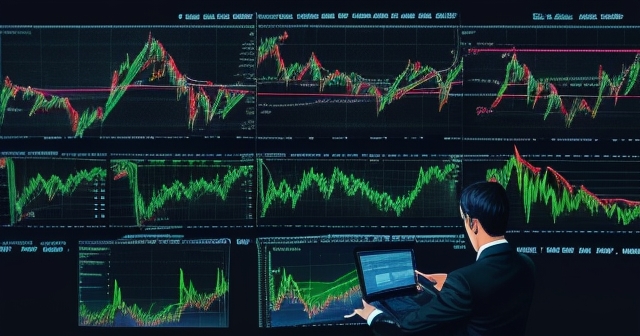
The calculation of the Put-Call Ratio is straightforward, yet its simplicity belies the depth of insight it can offer. There are two primary ways to calculate the PCR, based on different data points:
- Volume-Based PCR: This is the most common calculation, focusing on the number of option contracts traded during a specific period (usually a trading day). The formula is:
Volume PCR = (Total Put Option Volume) / (Total Call Option Volume)This ratio reflects the immediate intensity of buying and selling pressure in puts versus calls throughout the trading session.
- Open Interest-Based PCR: This version uses the total number of outstanding option contracts that have not yet expired or been exercised (Open Interest). The formula is:
Open Interest PCR = (Total Put Option Open Interest) / (Total Call Option Open Interest)The Open Interest PCR provides a view of the positioning held by market participants over time. It reflects the cumulative number of long and short positions that are still open. While the Volume PCR shows *today’s* activity, the Open Interest PCR shows the *standing* sentiment or positioning in the market.
| Type | Formula | Interpretation |
|---|---|---|
| Volume PCR | (Total Put Option Volume) / (Total Call Option Volume) | Reflects immediate buying/selling pressure |
| Open Interest PCR | (Total Put Option Open Interest) / (Total Call Option Open Interest) | Indicates participants’ positioning over time |
Both calculations offer valuable perspectives. The Volume PCR is often used to gauge short-term sentiment and reaction to news, while the Open Interest PCR can provide a broader view of market conviction and potential longer-term trends or crowded positions. You might also encounter calculations for specific indices (like the Nifty50 or S&P 500), sectors, or even individual stocks, though broad index PCRs are often considered more reliable sentiment indicators due to the diverse participation.
Data for calculating these ratios is readily available from options exchanges like the Cboe Options Exchange (Cboe), which is a primary source for listed options data in the US.
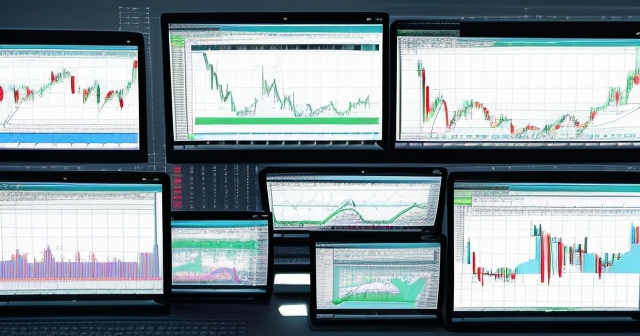
Interpreting the Put-Call Ratio is key to using it effectively. The ratio provides a numerical value that indicates the relative preference for puts over calls.
- PCR > 1: When the ratio is greater than 1, it means that the volume or open interest of put options is higher than that of call options. This suggests that more traders are buying puts than calls, indicating a prevalence of bearish sentiment. Market participants are either betting on price declines or hedging against potential downturns. A rising ratio moving further above 1 reinforces this bearish outlook.
- PCR < 1: Conversely, when the ratio is less than 1, the volume or open interest of call options exceeds that of put options. This signifies that more traders are buying calls than puts, pointing towards dominant bullish sentiment. Market participants are optimistic and are positioning for potential upward price movements. A falling ratio moving further below 1 strengthens this bullish signal.
- PCR ≈ 1: A ratio around 1 might intuitively suggest a neutral sentiment, where the activity in puts and calls is roughly equal. However, this is where nuance is critical. For equity markets, the “neutral” baseline is often *not* 1.0. Due to structural reasons (like portfolio hedging using puts, and generally higher retail participation in call buying for speculative purposes), the average Put-Call Ratio for equity indices typically hovers closer to 0.70 to 0.80. So, a ratio of 1.0 for equities is actually quite high and suggests significant bearishness relative to the norm. It’s essential to understand the historical context and typical range for the specific market or asset you are analyzing.
| PCR Value | Interpretation |
|---|---|
| PCR > 1 | Indicates bearish sentiment |
| PCR < 1 | Indicates bullish sentiment |
| PCR ≈ 1 | Indicates neutral sentiment, needs context |
Understanding this baseline is paramount. A ratio of 0.8 might seem slightly bearish if you expected 1.0 to be neutral, but if the historical average for the market is 0.75, then 0.8 is only slightly elevated. If the average is 0.70, then 0.8 is notably more bearish. Always compare the current ratio to its historical range and average levels for proper interpretation.
While the absolute value of the Put-Call Ratio offers a static snapshot, observing the ratio’s trend over time provides dynamic insights. A steadily rising PCR indicates that bearish sentiment is building. This could be due to increasing numbers of traders buying puts to speculate on declines, or more institutions and investors buying puts to hedge their long equity positions against a potential market pullback.
A steadily falling PCR suggests that bullish sentiment is gaining traction. This might occur as traders become more confident and shift from hedging to speculation, buying more calls in anticipation of rallies, or as existing put holders close their positions (which can impact open interest). Observing these trends can help you understand the momentum behind the prevailing market psychology.
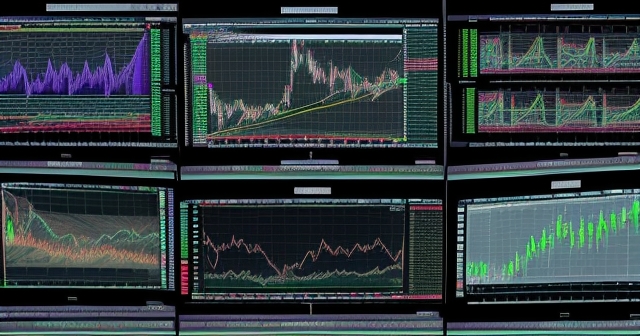
For example, if the market is rallying but the PCR is also slowly creeping up, it could signal underlying apprehension or increasing hedging activity, potentially suggesting the rally might face resistance or be vulnerable to a sudden reversal. Conversely, if the market is declining but the PCR begins to flatten or slightly decrease, it might indicate that the peak of fear has passed, or that traders are starting to look for buying opportunities, leading to increased call activity.
This dynamic analysis is where the PCR truly shines. It’s not just about whether the ratio is high or low today, but about the *direction* it has been moving and the *speed* of that movement. A sharp, sudden spike in the PCR might indicate panic selling or heavy hedging in response to breaking news, while a gradual climb could reflect a more fundamental shift in outlook.
One of the most powerful and popular applications of the Put-Call Ratio is as a contrarian indicator. Contrarian investors and traders believe that when market sentiment becomes overwhelmingly one-sided, a reversal is likely imminent. Why? Because if almost everyone who *could* take a certain position (either bullish or bearish) already has, there are fewer people left to continue pushing the market in that direction. The trade becomes “crowded,” and any small catalyst can trigger a cascade of position unwinding, leading to a sharp move in the opposite direction.
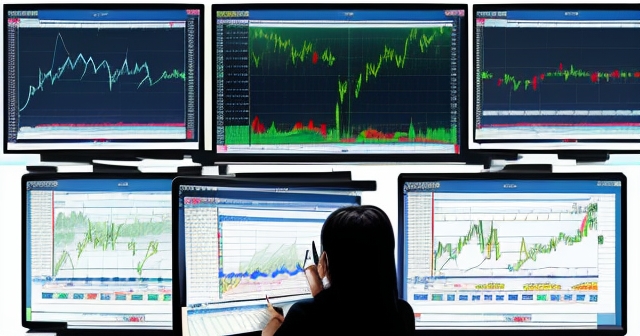
- Extreme High PCR as a Bullish Signal: When the Put-Call Ratio reaches unusually high levels relative to its historical range (e.g., significantly above 1.0, perhaps 1.2, 1.3, or even higher for equities depending on context), it indicates a state of extreme bearishness or fear. The “crowd” is heavily positioned for a market decline. Contrarians interpret this extreme pessimism as a potential “washout” of sellers and hedgers. If everyone is already bearish and protected with puts, who is left to sell? This point of maximum pessimism can often coincide with market bottoms or significant upward reversals (rallies).
- Extreme Low PCR as a Bearish Signal: Conversely, when the Put-Call Ratio drops to exceptionally low levels (e.g., well below the typical 0.7 baseline, perhaps 0.5 or lower), it signals extreme bullishness or complacency. The “crowd” is overwhelmingly positioned for further market gains, heavily buying calls and potentially neglecting hedging. Contrarians view this excessive optimism as a sign that the market is overheated and vulnerable to a downward correction or reversal. If everyone is already bullish and positioned with calls, who is left to buy and push prices higher? This can often align with market tops or significant downward moves (pullbacks).
This contrarian perspective is a cornerstone of using the PCR. Legendary investors like Martin Zweig were known to incorporate options data, including early forms of the Put-Call Ratio, into their market forecasting models. Using the PCR as a contrarian tool requires identifying what constitutes an “extreme” level for the specific market or asset being studied, which means analyzing its historical behavior and typical range. It’s not just about hitting a specific number, but about hitting a level that has historically coincided with turning points.
While the Put-Call Ratio is a powerful indicator, its interpretation requires understanding the various factors that can influence it beyond simple speculative bets:
- 1. Hedging Activity: A significant portion of put option volume and open interest comes from portfolio hedging by large institutions and investors. If a fund holds a large portfolio of stocks, they might buy puts to protect against a market decline. This is a legitimate risk management strategy and doesn’t necessarily mean the fund is *speculating* on a crash. Increased hedging during periods of uncertainty or market volatility can push the PCR higher even if pure speculative sentiment isn’t overwhelmingly bearish. It’s important to distinguish between speculative and hedging-driven activity when possible, although this can be challenging with aggregate data.
- 2. Volatility: Changes in market volatility can directly impact option pricing and activity. During periods of high volatility (or anticipated high volatility, such as before major economic announcements or earnings reports), the prices of both puts and calls generally increase. However, the *demand* for puts can sometimes increase disproportionately during uncertain or fearful times, further influencing the ratio.
- 3. Market Structure and Participants: The ratio can be influenced by the dominant types of participants in the market. Retail traders might heavily favor buying calls (due to leverage potential and lower upfront cost compared to puts in some scenarios), while institutions might be more involved in complex options strategies or large-scale hedging operations. This can skew the “typical” baseline for the ratio.
- 4. Specific News and Events: Major economic data releases, central bank announcements, geopolitical events, or company-specific news can trigger immediate, sharp reactions in option markets, leading to sudden spikes or drops in the PCR as traders and hedgers rapidly adjust their positions.
- 5. Option Strategy Complexity: Traders don’t just buy puts or calls in isolation. They use complex strategies like spreads, straddles, and iron condors that involve buying and selling multiple options simultaneously. The net effect of these strategies on aggregate put and call volume/open interest can be intricate and not always a direct reflection of simple directional bets.
| Factors | Impact on PCR |
|---|---|
| Hedging Activity | Can push PCR higher without necessarily indicating bearish sentiment |
| Volatility | Increased puts demand may raise PCR |
| Market Structure | Skewed by retail vs institutional trading behavior |
Understanding these factors adds layers of complexity but also depth to your analysis. A high PCR could signal panic *or* prudent hedging. A low PCR could signal irrational exuberance *or* just a lack of perceived risk requiring hedges. Context, as always in markets, is king.
We touched upon Volume PCR and Open Interest PCR earlier, but let’s delve a little deeper into why you might choose one over the other, or perhaps use both in conjunction.
- Volume PCR: This is a real-time, or at least end-of-day, measure of transaction flow. It tells you about the *action* happening right now or today. A sudden surge in Volume PCR can alert you to immediate shifts in sentiment driven by news or intraday market moves. It’s excellent for short-term analysis and identifying moments of panic or euphoria as they occur. However, volume can be noisy; a few large institutional trades could potentially skew the ratio for a given day without representing a broad shift in market positioning.
- Open Interest PCR: This metric reflects the total number of contracts that are *open* – positions that haven’t been closed or expired. It represents the cumulative positioning and conviction held by market participants. Changes in Open Interest PCR tend to be slower and may reflect more sustained shifts in sentiment or structural positioning. It’s generally considered better for identifying longer-term trends in sentiment and potential large, crowded trades that might unravel. However, Open Interest data is typically only updated daily after the market closes, so it doesn’t give you an intraday view.
Many traders and analysts prefer to look at *both*. The Volume PCR can signal a potential shift or event-driven reaction, while the Open Interest PCR can confirm whether that shift is leading to a more lasting change in market positioning. For broad market indices, both are widely tracked, but for individual stocks with less options activity, Open Interest PCR might be less reliable due to thinner markets.
Consider how you might use them: If you see a sharp spike in Volume PCR intraday during a market sell-off, it suggests immediate panic selling and hedging. If the Open Interest PCR then also increases significantly by the end of the day and continues to rise over subsequent days, it confirms that participants are adding to their bearish positions or hedges, indicating building structural pessimism.

The Put-Call Ratio can be calculated and analyzed for various underlying assets, but its reliability and interpretation can differ.
- Broad Market Indices (e.g., S&P 500, Nasdaq 100, Nifty50): The PCR is most commonly and reliably used for major market indices. This is because index options are heavily traded by a wide range of participants, including large institutions, retail traders, and professional options traders. The aggregate volume and open interest for indices tend to provide a more representative picture of overall market sentiment than data from a single stock. An extreme reading in an index PCR is more likely to reflect widespread sentiment or hedging behavior across the market.
- Individual Stocks: Calculating the PCR for individual stocks is possible, but its interpretation can be more challenging. Option activity on a single stock can be heavily influenced by company-specific news (like earnings announcements, drug trial results, or regulatory decisions), rather than broad market sentiment. Also, option markets for smaller or less popular stocks can be illiquid, meaning a few large trades could dramatically skew the ratio without reflecting widespread sentiment. While a high PCR on a specific stock before a negative news event might signal insider hedging or informed trading, interpreting extreme readings as contrarian signals for individual stocks is often less reliable than for indices. It’s essential to consider company-specific catalysts and market liquidity when using stock-specific PCRs.
Think about the typical trading patterns. Index options are often used for macroeconomic hedges or broad market bets. Single stock options are more often used for specific company bets, earnings trades, or stock-specific hedging. The drivers behind the put/call activity are different, necessitating a different approach to interpretation.
If you are a newer investor exploring various trading instruments, including potential Contracts for Difference (CFDs) which derive their value from underlying assets similar to options, understanding indicators like PCR that reflect sentiment on those underlying assets can still be beneficial. For example, a high index PCR might signal potential weakness in the broader market environment, which could affect various instruments tied to that market.
If you’re looking to trade global markets or explore various CFD instruments, including those based on indices, stocks, or commodities, finding a robust trading platform is key. Moneta Markets is an Australian-based platform offering a wide range of financial instruments. They support popular platforms like MT4, MT5, and Pro Trader, designed for various experience levels, and offer competitive conditions like low spreads and fast execution, which are important for both options and CFD trading.
Like any single indicator, the Put-Call Ratio is not a crystal ball and has its limitations. Relying solely on the PCR without considering other factors can lead to poor decisions. Here are some key points to remember:
- Correlation, Not Causation: The PCR reflects sentiment and positioning, which *can* correlate with future price movements, but it doesn’t *cause* them. The market moves based on a complex interplay of supply, demand, news, fundamentals, and psychology.
- Hedging vs. Speculation: As mentioned, high put activity can be driven by hedging rather than outright bearish speculation. It’s hard to definitively separate these two in aggregate data, which can sometimes lead to false signals.
- Context is Crucial: An “extreme” reading is relative. What was extreme last year might be normal now. You need to analyze the ratio within its historical context and consider the current market environment, including economic conditions, news flow, and volatility levels.
- Sentiment Can Linger: While extreme sentiment *can* signal reversals, there’s no rule stating how long sentiment extremes must persist. A market can remain overly bullish or bearish for extended periods before a reversal occurs.
- Washouts and Capitulation: Sometimes, an extremely high PCR indicates panic and capitulation – everyone who wanted to sell or hedge has done so. This *can* precede a bottom. Other times, high put activity simply reflects growing conviction that a downtrend will continue. Distinguishing between these scenarios requires other tools.
| Key Considerations | Insights |
|---|---|
| Correlation | PCR correlates but does not cause price movements |
| Hedging vs. Speculation | High put activity may reflect hedging |
| Context is Crucial | Analyze towards historical context |
To use the PCR effectively, consider it as *one* piece of a larger puzzle. Integrate it with other forms of analysis:
- Technical Analysis: Combine PCR signals with chart patterns, support and resistance levels, trend lines, and other technical indicators (like moving averages, RSI, MACD). An extreme PCR reading coinciding with a major support level on the price chart is a more compelling potential buy signal for a contrarian.
- Fundamental Analysis: Understand the underlying fundamentals of the asset or market. Is the high PCR occurring in a market with deteriorating economic fundamentals, or is it happening despite solid economic data, suggesting potentially irrational fear?
- Economic Calendar and News: Be aware of upcoming events that could be driving options activity and potentially skewing the ratio (e.g., Federal Reserve meetings, jobs reports, earnings announcements).
- Volatility Indices: Compare the PCR to volatility indicators like the VIX Index (“Fear Index”). High VIX often correlates with high PCR, both reflecting market anxiety. Analyzing their relationship can offer deeper insights.
Think of the PCR as a valuable sentiment filter. It helps you understand the psychological backdrop against which price movements are occurring. Are prices falling amidst increasing panic (high PCR) or relative indifference (low PCR)? Are prices rising on widespread optimism (low PCR) or cautious skepticism (high PCR)? This added layer of understanding can enhance your overall market awareness.
Where can you find the data to calculate or view the Put-Call Ratio? Fortunately, it’s widely available.
- Financial Data Providers: Many major financial data platforms and websites (like Bloomberg, Refinitiv, FactSet, and consumer-focused sites like Yahoo Finance, Google Finance, Investing.com, etc.) provide historical and sometimes real-time or delayed PCR data for major indices.
- Brokerage Platforms: Most trading platforms offered by brokers that provide access to options trading will display the PCR for various indices and potentially individual securities. Look in the ‘Options’ or ‘Market Data’ sections of your platform.
- Options Exchange Websites: Websites of options exchanges, such as the Cboe, are primary sources for raw or aggregated options data, including volume and open interest figures needed to calculate the ratio.
- Specialized Options Analytics Platforms: There are platforms specifically designed for options traders that offer advanced analysis, including detailed breakdowns and charting of the Put-Call Ratio and its historical levels.
When accessing PCR data, always note which calculation is being used (Volume or Open Interest) and for which underlying asset (e.g., S&P 500 index options, total US equity options). Ensure consistency in your analysis. Charting the PCR over time is immensely helpful in identifying historical extremes and typical operating ranges.
Remember, consistent access to reliable market data and robust analytical tools is essential for any serious trader or investor. Choosing a platform that provides these resources, alongside access to the instruments you wish to trade, is a critical decision. For investors exploring a range of financial markets, including potentially indices, commodities, and currency pairs through CFDs, platform features, regulatory compliance, and execution speed are key considerations.
For traders looking for a well-regulated platform with extensive market access, Moneta Markets is regulated by authorities like ASIC (Australia), FSCA (South Africa), and FSA (Seychelles). They offer a wide variety of tradeable assets beyond just options, like CFDs on forex, indices, commodities, and cryptocurrencies. Their regulatory framework, coupled with features like segregated client funds and potentially free VPS for automated strategies, adds layers of security and functionality that many traders prioritize.
In conclusion, the Put-Call Ratio is a simple yet powerful tool that offers valuable insights into the prevailing mood of the options market, and by extension, the broader financial landscape. By comparing the volume or open interest of put options (representing bearish sentiment or hedging) to call options (representing bullish sentiment), you gain a numerical perspective on whether fear or optimism is currently dominant.
Understanding the typical baseline for the ratio, observing its trend over time, and particularly identifying when it reaches historical extremes, can provide you with a unique edge. While a high PCR often signifies widespread bearishness, contrarian traders see extreme high readings as potential buy signals, anticipating a reversal born from excessive pessimism. Conversely, extreme low PCRs, indicating excessive bullishness, can be viewed as potential sell signals by contrarians.
However, remember that the PCR is best used in conjunction with other analytical methods. Combine its insights with technical analysis of price charts, fundamental analysis of the underlying asset, awareness of market news and events, and potentially other sentiment indicators. This holistic approach provides a more robust framework for decision-making.
Integrating the Put-Call Ratio into your analytical process won’t give you perfect predictions, but it will provide a deeper understanding of market psychology. It helps you gauge whether a price move is being accompanied by fear or confidence, helping you identify potential turning points or confirm existing trends. By adding the PCR to your toolkit, you gain a valuable perspective on the forces driving market dynamics, enhancing your ability to make more informed trading and investment choices.
put call ratio meaningFAQ
Q:What is the Put-Call Ratio?
A:The Put-Call Ratio (PCR) measures the volume of put options versus call options, indicating market sentiment.
Q:How do you calculate the Put-Call Ratio?
A:The PCR is calculated by dividing the number of traded put options by the number of traded call options.
Q:What does a high PCR indicate?
A:A high PCR usually indicates bearish sentiment, suggesting that more traders are buying puts to hedge against or profit from expected declines in the market.
